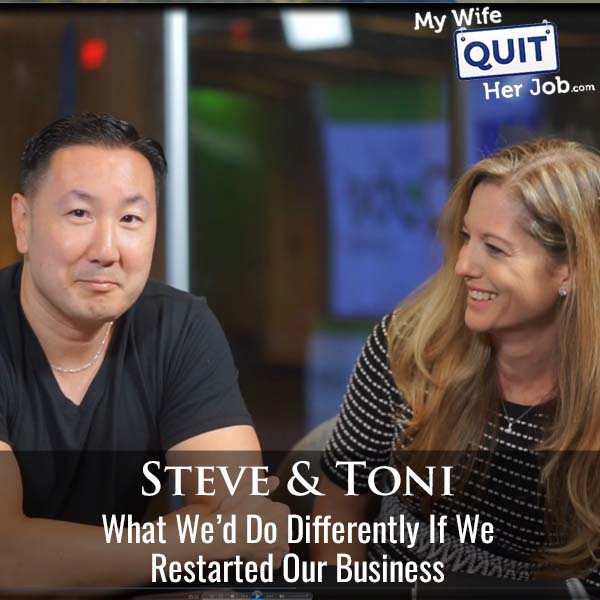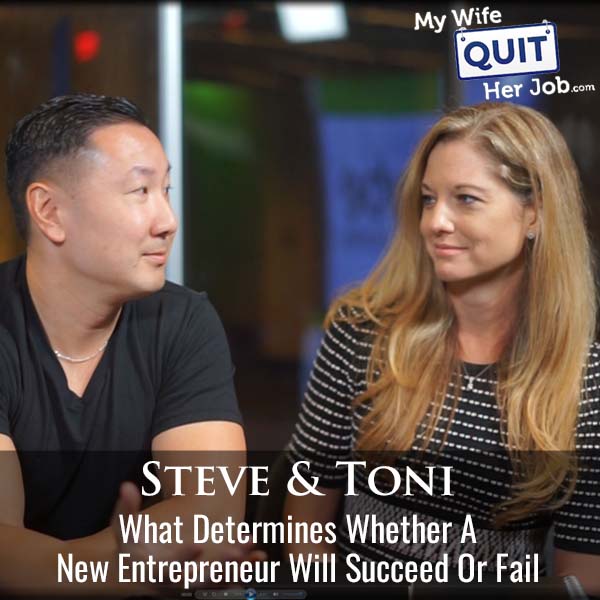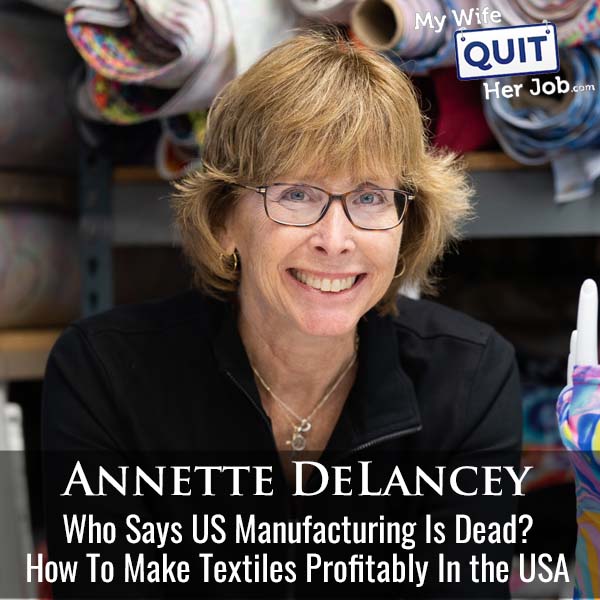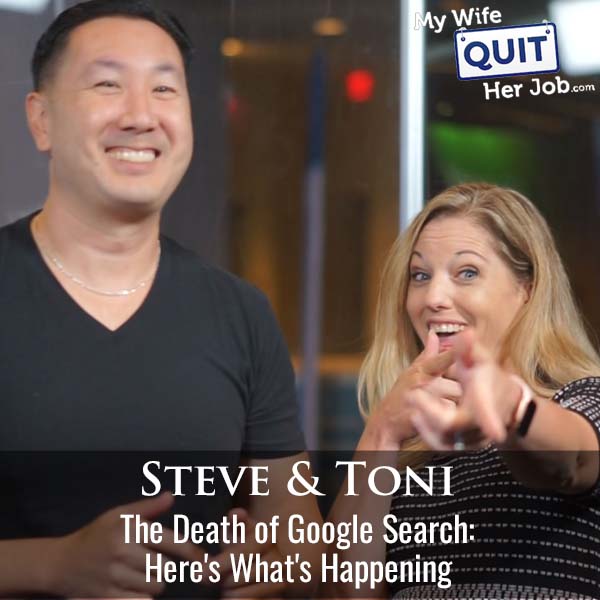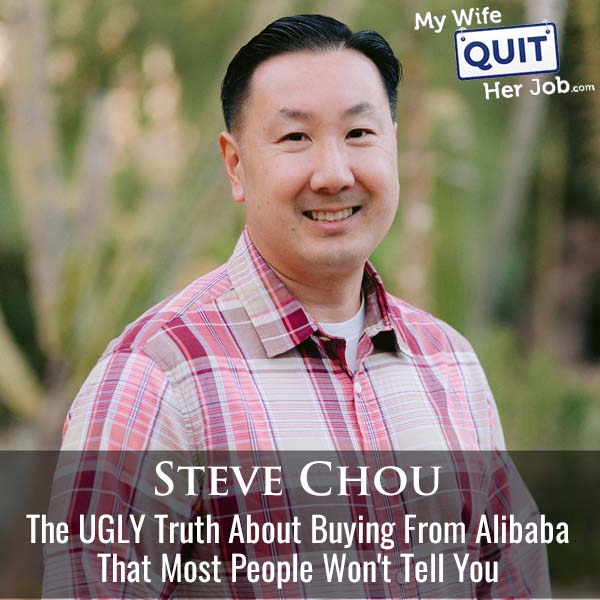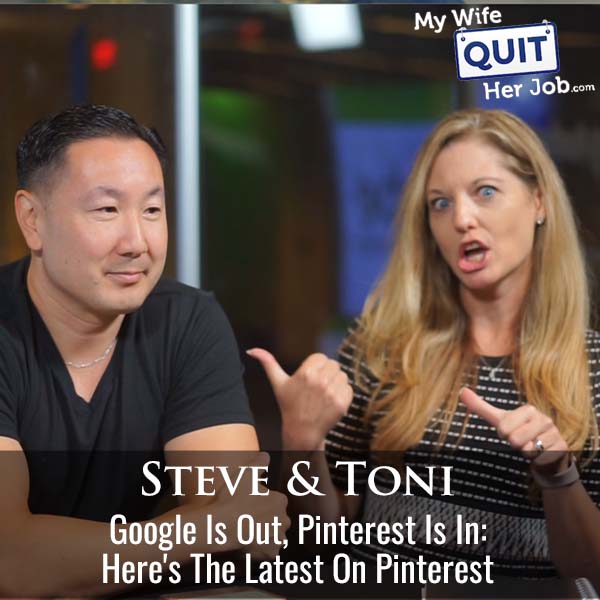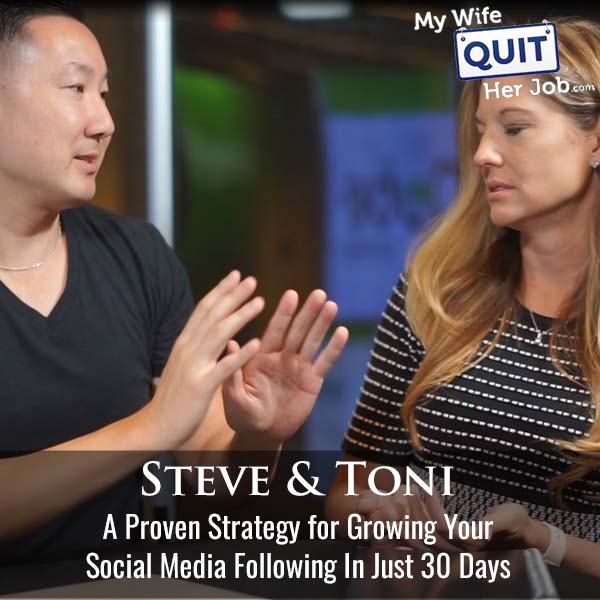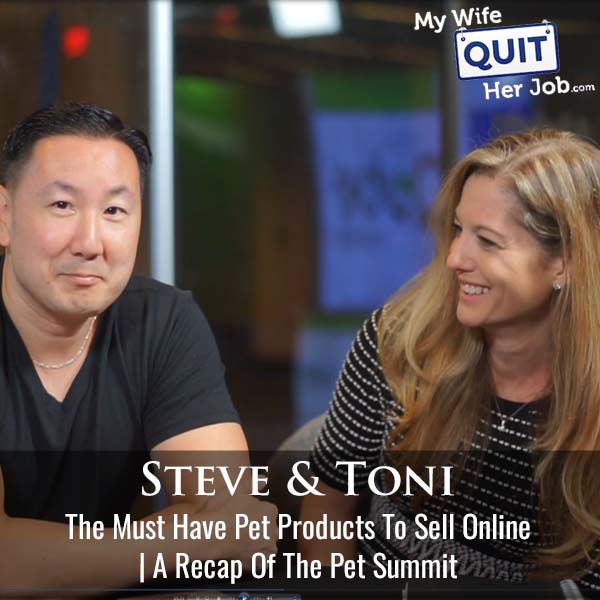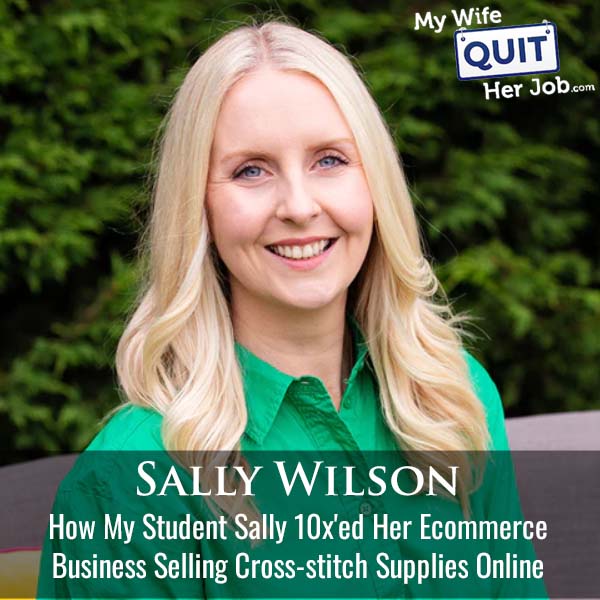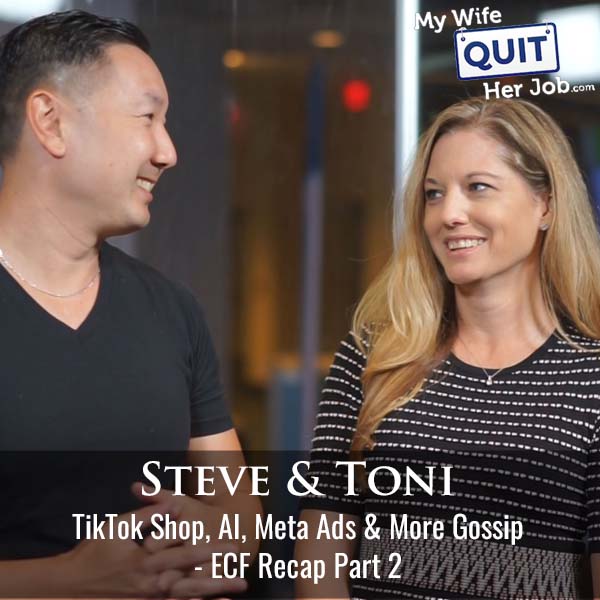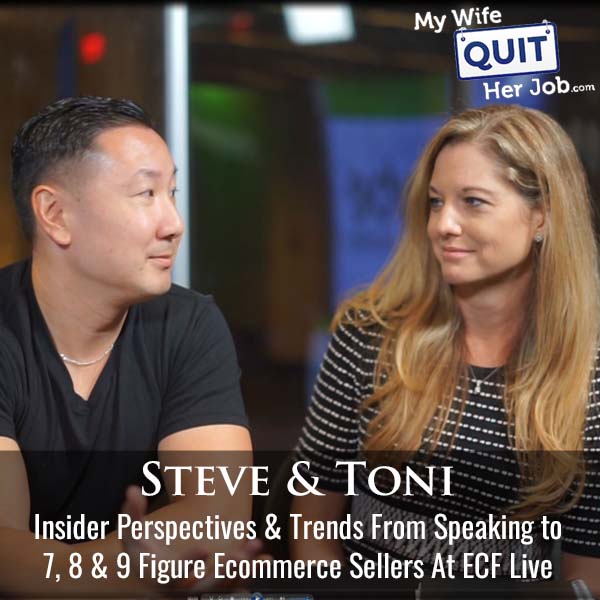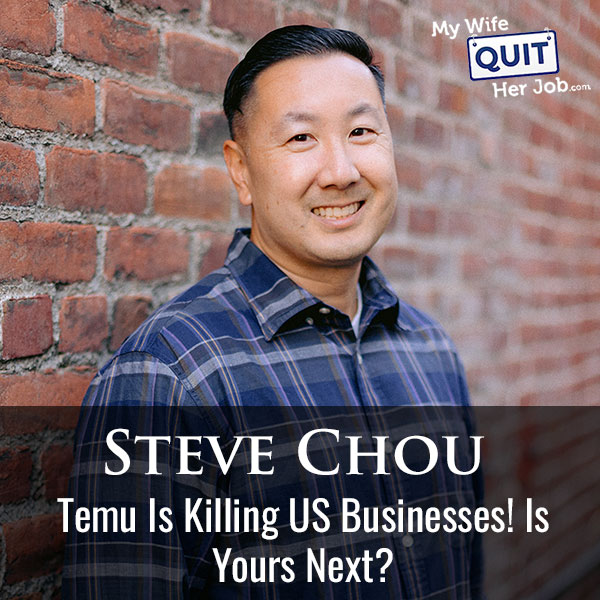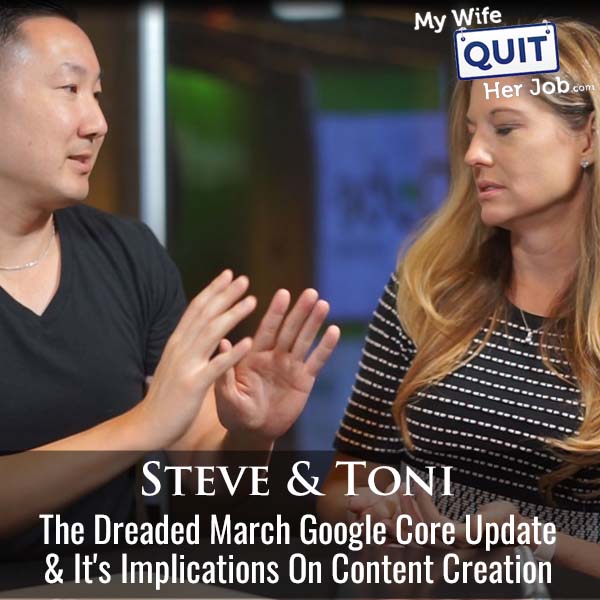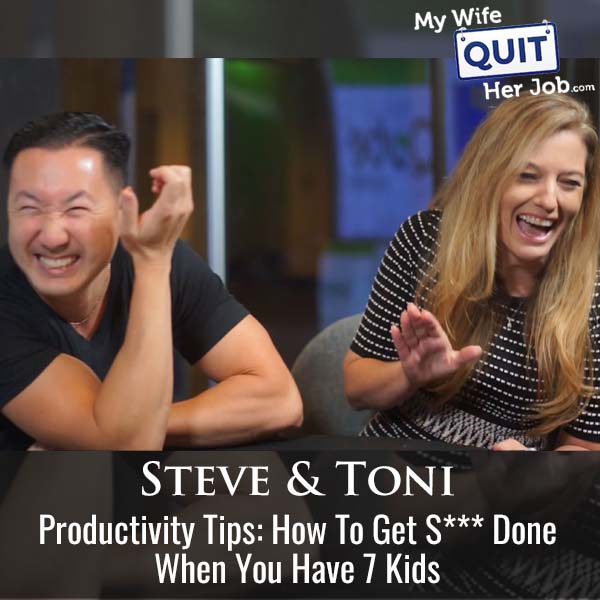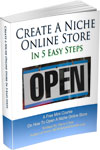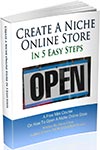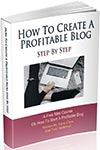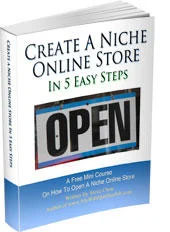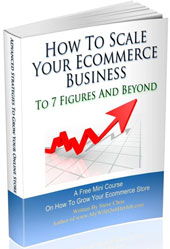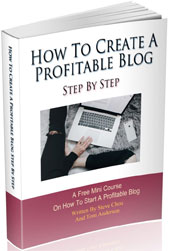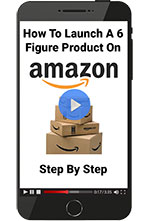Podcast: Download (Duration: 42:52 — 49.3MB)
The Internet landscape has changed pretty drastically in just the past 3 months.
Today my partner Toni and I are going to discuss what type of businesses we would start if we were to start from complete scratch today.
What You’ll Learn
- The recent changes in social media and Google
- The best opportunities in content today
- What we would do if we were to start all over again
Sponsors
SellersSummit.com – The Sellers Summit is the ecommerce conference that I’ve run for the past 8 years. It’s small and intimate and you’ll learn a ton! Click Here To Grab Your Ticket.
The Family First Entrepreneur – Purchase my Wall Street Journal Bestselling book and receive $690 in free bonuses! Click here to redeem the bonuses
Transcript
You’re listening to the My Wife, Could Her Job podcast, the place where I bring on bootstrap business owners and talk about what’s working and what is not in business. And today, my partner, Tony and I are going to discuss what type of businesses we would start if we were to start from complete scratch today. But before we begin, just a reminder that if you haven’t picked up my Wall Street Journal bestselling book, The Family First Entrepreneur yet, it’s on sale on Amazon at 50 % off right now. And if you fill out the form over at mywifecouldherjob.com slash book, also send you a free course on print on demand.
00:30
as well as a mini course on how to make money with podcasting, YouTube and blogging. Now on to the show.
00:40
the My Wife Could Her Job podcast. Today we’re going to talk about what we would do if we were to start all over again. And now’s a good time to talk about this because there’s been so many changes all across the board in social media, in Google land, a lot of changes. Yeah. And you just told me right before we started recording that one of the reasons why you want to do this is all of your friends are starting over. They are because Google is unpredictable. Yeah.
01:09
And we’ve already talked about this in prior episodes, but it’s been a roller coaster ride for me. And unfortunately, I’m kind of at a lower point now in my roller coaster ride. Things have changed actually in just a week. And who knows, maybe it’ll go back up again in another week. Google is just not a reliable way to base your business on right now, in my opinion, until things settle down. Who knows if they’re ever gonna even settle down because of AI. It’s funny that you say that since…
01:37
your whole life that I’ve known you’re like, Google’s the only reliable way. Yes, it has been rock solid for 15 plus years. Yes, and now all of that has crumbled.
01:51
It’s just volatile, let’s say. Yes. I know what I would do if I started over. I have a whole plan. Do you? Okay, let’s hear it. I want to hear what you have to say first, though. No. Okay. I’ll tell you what mine is. I don’t have to start all over from scratch, but here’s the thing. When I was thinking about this topic,
02:19
It was difficult for me because I have all these skills now that I’ve just kind of developed over time. So if I were to start all over again, I think it’d be a lot easier. So are we talking about from the perspective of someone who’s starting completely green or are we talking about ourselves if we were to start all over again? Well, I would just quit. I wouldn’t start over. I’m too old for that. I was thinking of it from the perspective of someone who is just green.
02:46
Green, okay. Doesn’t know anything. They’re an accountant for a big firm and they’re sick of their job and they wanna do something different. That was my But what skills do we have in terms of content creation? You don’t need any skills in my opinion. Everyone has skills that you can build a business on. The skills that, and I would argue that today it is easier to gain the skills that you and I have both gained because the information is so readily available.
03:13
I remember back in, I think, 2008, learning about affiliate links and wanting to know more about how to use affiliate links and nobody was talking about it. Everyone was keeping it very guarded and they wouldn’t share any information. Today, you can find everything you need to know about using affiliate links and making money with affiliate links for free all over the internet.
03:37
where I felt like back in the day when we got started, it was like you had to crack the secret code to the underground meeting space where someone would quietly tell you how to get into commission junction. The information is so much more free flowing these days that I think even having zero content creation skills, you are at a huge advantage if you start now versus starting 15 years ago. I think we have the opposite problem today.
04:04
It’s just too much information. whenever I want an answer to something, there’s like 20 pieces of content that I have to read. I actually hate that, which is why AI is so much better for me now. Like, you know, you like going on YouTube, right? When you want an answer. I hate going on YouTube because I got to sit through someone’s darn introduction and whatnot. And I just want the answer, right? So you know what I do now is I literally just cut and paste the transcript into ChattyBT and I say, in this…
04:32
video, this is the content I’m looking for, what is the answer? Yeah, I mean, that’s fair. Usually on YouTube, though, I’m looking for how to do something. So typically with a tutorial, they get into it pretty quickly. But I do agree with you. I don’t want to listen to your life story as we get started. So if I was starting all over and I didn’t have any experience, this I would have a very, very simple game plan. And this is where I think people get tripped up. So first of all, I would find my niche, which was where everybody gets stuck.
05:02
Nobody knows what niche to do or they have six niches that they’re interested in. I would spend a little bit of time doing niche research and finding out if my ideas are viable. We always joke about the microprocessor design, but in reality, not a lot of people care about that. So you’re probably passionate about something else too. So make sure that when you are trying to come up with some sort of topic that you do do a little bit of research to find out if.
05:31
people are interested in learning more about it. I mean, I think that’s less important today, to be honest with you. Really? Because I’ve just come to realize that the topic matters less. It’s more about the delivery, at least in terms of video is what I’m talking about. Right. I would agree. But I think you know, if we’ve had every once in a while, someone’s like, I’m really interested in that. And we’ve done some research for them and are like, you know what? You’re the only one. So I do. That’s correct. I do think, you know,
06:00
there are some things that are specific enough to where that’s a great idea, but it’s not gonna make you any money. So I would go in initially with a niche that I knew that at some point I could monetize. So that would be my step one. And everybody has a niche they can monetize. We hear from people, oh, I don’t know what I would talk about. Yes, you do. What do you talk, like we just spent 10 minutes before we recorded this talking about the MBA.
06:23
and I joked with you that we needed to do an MBA podcast. Everybody has something they’re passionate about. I know that you watch YouTube videos with MBA edits and MBA commentary. People are making money not being professional MBA broadcasters, but taking their angle on what they think about basketball and making an income from it or making a side income from it. So get the niche down. then, so I would do the niche, step two.
06:50
I would set up a website, which I know is now a controversial thing. No, it’s not controversial. But here’s what I was going to say before we get into the website stuff. Yeah. I’ve talked to so many people that don’t get started because they don’t know whether the niche is profitable or not. Or I think people just overthink things. Yeah. I actually just recently had a consult with a student who didn’t want to get started until their branding was down. Yes. And
07:20
And this is for YouTube, just to be specific. I didn’t have any of that stuff. I didn’t even have a graphic on my channel for the longest time. In fact, I didn’t have a graphic for years. It doesn’t matter. No one cares. No one cares about the graphic. No one cares. And chances are, what you start with isn’t what you’re gonna end with. Correct. So that’s why I think people just tend to overthink the whole niche thing.
07:48
Maybe some just basic research. Yeah. But like microprocessor design, I don’t need a keyword tool to tell me that there’s no future in that. Or maybe there is a future. future if you actually can design a microprocessor, but talking about it might not be the future. I mean, maybe there is a future there. Maybe if I did go down that route, I could be, you know, an advisor to microprocessor design firms and make money that way. But certainly not on ads. I guess it just depends. But people overthink things all the time.
08:17
For sure, and I think the other thing that I think people get stuck in is, and we see this a lot when we do our consult calls, is well, I don’t know how to make money from this. And meanwhile, you and I have 100 ideas of how they can make money as they’re talking about it. And so that’s where people are like, oh, don’t wanna move forward because I don’t know how to make money. Well, you and I wouldn’t have had 100 ideas of how to make money from those topics had we not been making money from topics for this time. So I would say, you know,
08:47
start with your topic, get started, and the money ideas will come to you because as you create the content, you will start seeing the opportunities and people will ask you for things, right? People will want information. I was just thinking about our student, Pilar, and profitable audience who was a flight attendant, and she started making travel brochures.
09:09
and now sells them to these travel agencies all over the world. And it was kind of like, had she not gotten started with this travel brochure idea that she had, she would have never found out that there’s an opportunity to sell them to numerous places globally, right? But you had to get started to even know that that existed for you. So I think the people that get stuck with, I’m not quite sure how to make money from this. You can figure out the money piece down the road, but if you don’t get started, I promise you, you’ll never make money.
09:38
And I think of instead of thinking about niche research, I would think about what spin am I going to put on this? So for example, personal finance is a very crowded niche. Yeah. But I might put something like personal finance for Asians, for frugal Asians like myself, something like that. Right. That won’t make you any money because they won’t buy your course. That’s That’s true. But just some spin or even like a target demographic that you’re targeting.
10:07
It’s like that in e-commerce too our friend Ezra he he sells makeup for women over the age of 40 It’s probably the same stuff for the most part, right? Oh, it’s not it’s not we need to take it on It’s a special blend once you get old No, but I agree like find the niche within your niche
10:30
Like our friend Naomi in the profitable audience course, I’ve been watching her Instagram reels and she’s talking about solo traveling through the United States. There’s a lot of people interested in solo travel but are afraid to get started. So I think that’s a great niche because I think it’s scary to travel by yourself, especially if you’re a female. So having a resource out there of someone who’s already doing it and she’s providing information to people, like that’s a really great niche. It’s because travel is saturated too.
10:56
but this is a good little side niche of travel where you can reach a very specific audience. Yep. Okay, so the next step website essential, if not just to collect emails. Is that what you’re getting at? think so many people that I’ve met recently are don’t even have a website. They’re on TikTok or Instagram or even YouTube, but they have nowhere to send people. And I just find that dangerous. I think about our friend Leslie who lost his YouTube channel. He did get it back.
11:26
But as long as you’re collecting emails and getting people’s information on your own property, which would be a website, I think you have a better case than if you have nothing and then your TikTok account gets banned, right? And you had 2 million followers, but that’s all you had. You have no way to contact those people or to do anything, right? So having that website, to me, is still critical, even though some people would probably say, you don’t need a website anymore. I still think you do.
11:56
You absolutely do. And even though Instagram and Facebook have messenger lists, I played this Facebook game long enough now. They’re going to start charging for it at some point. Guarantee it. I’ve gotten burned every single time this happened. I’m not falling for it again. Or I shouldn’t say that I’m doing it still, but I’m not going to fall for going all in on anything related to social media. And then YouTube has a community tab, which is I guess their version of Instagram.
12:27
but it only reaches a very small fraction and you have to post constantly in order to get any sort of traction on that community tab. And it’s not yours. They could take away the reach at any time. It’s a black box. Yeah. So I would set up my website. And then I was thinking about this. So hold on. A website is a strong term for what I’m talking about here. It could just be a one pager. Correct. Right. With what you’re all about, maybe some sort of lead magnet and an email form. Websites intimidating people. That’s why I wanted to make that
12:55
I would set up a WordPress blog with a theme that you could get for free. I wouldn’t care much about how it looks because I didn’t care much about how my blog looked when I got started. I cared, but I did a terrible job. And I would focus on the content. Yep. Actually, the website doesn’t even need to look good as evidenced by our journeys. Yes. And my whole YouTube journey, really, like that homepage looking really ugly. So yeah.
13:24
One pager, it’ll literally cost you three bucks a month to start that. So I would start, I would set up a WordPress blog. And then the next thing that I would do, and I thought about this a lot last night as I was watching my NBA teams lose, is I would write five robust pieces of content about my niche. So let’s just say I’m talking about gardening.
13:51
I would write five gardening pieces that would be complimentary to each other, but they would definitely be on different things. And I don’t know anything about gardening, so this is probably a terrible example. But I would talk about how to get your seeds started in the spring. I would do a summer, thing about what you do in the summer. Maybe one about natural pests or how to keep pests out of your garden. But I would find five different articles that I could write.
14:20
in depth about that topic. And then I’m gonna tell you what I’m gonna do with it in a minute. Okay. I don’t think I would start with writing blog posts. I know. You know that. Okay. Instead, what I would do is I would just create a Google Doc and put down every single topic idea that I could even think of. And then think about like the media, the content medium later. And, you know, we were just talking about blogs.
14:50
and how Google’s in a state of flux right now. I think if you were to write those blog posts, it’d be unpredictable. Would you be writing them with the intention to rank them or as like a source for some of your other content that’s coming out? It would be my landing page source. It would be the hub of everything, yes. I thought about this long and hard. was like, what is the easiest way to do this? Because most people get stuck.
15:18
and most people get overwhelmed. So I was like, okay, if I wanted to do this with like, I don’t wanna say the least effort possible, but if I wanted to maximize my return, I would write five pieces of content. I would do some brainstorming as well, and that’s how I would come up with my five, so I did skip that step. But I would write five very robust pieces of content. Let’s just say two to 3,000 words. So what’s the goal of this content? I’m curious if no one’s gonna see it. Well, I would publish it on the blog, obviously.
15:47
And then I would take content piece one. And let’s just say content piece one is about how to get rid of pests without using pesticides in your garden. I would feed that blog post that I wrote into ChatGPT and I would have ChatGPT turn that into a long form video script for me in a conversational style. I would go through, I would make my own edits obviously. And then I would film a long form video on the topic of natural pesticides in your garden.
16:17
So that would be step two. Because to me, and I know like we talk about the importance of video and how we do think everyone should be on video, but video’s really hard for people for the most part. Most people just can’t pick up their phone and start recording. So to me, if you already write the article, so you’ve reminded your brain of the knowledge that you have, you’ve done the research, you’ve sort of continued to feed yourself, right? All this information.
16:45
Then I think when it comes time to recording that video, that information is really fresh and you just kind of made yourself even more of an expert by publishing that article first. It’s funny, the strategy you describe is what I did to grow my YouTube channel to over 100k subs in the beginning. That’s literally what I was doing with my blog post because at the time the blog was my hub of content generation.
17:12
I’ve actually adopted the opposite approach now. I don’t know if I even told you this actually. I don’t know if you have. Since YouTube is my main thing now, I write the YouTube script first and then I turn that into a blog post. Which I actually think is a great idea once you’ve made 200 YouTube videos. So you’re saying that this script will help you create the video or? I’m saying I think it’s easier to write scripts
17:43
before, like I think it’s easier if you’ve never made a YouTube video and you’ve never recorded yourself. I think it’s easier to write a blog post, write a piece of content and then turn that content into a script than to write a script first if you have no experience making video.
18:00
I mean, I see those two different skill sets because if you write a blog post that’s very factual, let’s say, and that’s not really your strength, writing is not really your strength, oftentimes it’s easier just to write it like how you would talk in a conversational tone, right? I I write blog posts in a conversational tone too. Yeah, yeah. I think it just depends on the person’s style. But here’s what I think. We all got taught how to write.
18:30
If you graduated from high school, which most people have or gotten your GED, you went through multiple writing classes throughout middle school and high school. So most people have a foundation of writing skills. They know how to make an outline. They know how to do these basic writing techniques. Most people don’t have script writing and video techniques. just, don’t, you’re not learning that in school. So to me, that’s why you start with the writing.
18:52
I also think the writing part reinforces that knowledge. it’s like kind of, you’re just reminding yourself of everything that you already know because the confidence factor is really hot, is hard for people. So people don’t lack confidence to make videos because they believe people won’t think they’re an expert. They’ll think they’re full of crap, like whatever it is, right? So when you write this article and you can look at this article and go, I just wrote 2000 words. I just wrote a paper, right?
19:18
I think it helps your confidence to then communicate that information in a different medium, which would be the video, long form video. Yeah, I think I would start with short form if I had no confidence on video. I think short form is like the perfect medium for this. It’s not really that much. You just pick up your phone. Production value is not important at all. In fact, production value that’s too good actually does not do well on short form.
19:45
That’s why I’m killing it on short form. No production value at It’s not intimidating at all. So I would take those blog posts if we were to use your method and I would break them apart into short form and just practice. I wouldn’t jump straight to long form, I don’t think is what I’m saying.
20:04
I just wanted to take a moment to tell you about a free resource that I offer on my website that you may not be aware of. If you are interested in starting your own online store, I put together a comprehensive six day mini course on how to get started in ecommerce that you should all check out. It contains both video and text based tutorials that go over the entire process of finding products to sell all the way to getting your first sales online. Now this course is free and can be obtained at mywifequitterjob.com slash free.
20:33
just sign up right there on the front page via email and I’ll send you the course right away. Once again, that’s mywifequitterjob.com slash free. Now back to the show.
20:44
But wait, Steve, there’s more. Oh, there’s more. Okay, all right, let’s continue. So then I would feed that same blog post into ChatGBT and ask ChatGPT to turn it into, what did you say? You can do 200 words in a minute? That’s for me, For a short form, anyway. Feed it into ChatGBT and have ChatGPT help you turn it into short form video. you know, take this, so we’re only talking about five pieces of content, but from five pieces of content, I believe you can get five long form videos
21:14
and probably a month’s worth of short form videos, if not two months worth of short form videos by chopping, I’m not saying chop up, like take the video that you filmed and chop it up, because I think that takes really good editing and most people don’t have those skills. But then, know, film clips for each point, each header in your blog post, so each header tag, right, that you’re talking about. So maybe your blog post has 10 points. Each of those 10 points is a short form video.
21:45
then you move to blog posts too, same thing. Each header is a short form video. If it’s easier to film the short form first, do that obviously. I don’t think that the order of long form versus short form matters as much, but then I would take that same, five pieces of content and probably get 100, if not 75 to 100 pieces of short form content from those five blog posts, which can last you three to four months on TikTok, Instagram or YouTube.
22:16
Yeah. So what’s funny about this strategy is I’m always looking for easier ways to do things. And I tried the chat GPT to short form method. just does not work that well, at least not for my stuff. Yeah. It actually works fine for creating a long form script, but I think in order for short form to be punchy enough, and I guess if you’re first starting out, this is all learning curve anyway, but I’ve never gotten chat GPT to put out.
22:44
really good short form videos without heavy editing for me. So I’ve actually switched over completely and I actually just look at my scripts now and then pull out my own short form. It actually doesn’t take that long because it’s just your own language kind of being rephrased. I have yet to try the paid version of Cloud yet, which I heard is much better than Chatgy BT. And I actually haven’t really, I haven’t tried Facebook’s new.
23:12
a new one that they just open source. But it just in my experience, Chatubee doesn’t do a great job with the hooks and everything needed for short form. True, I would agree with that. I think you need to come up with your own hook for sure. I mean, for me personally, I would just take a look at that heading tag and in riff for a short form video. you’re a master riffer. I am a riffer. So that part’s not intimidating to me. It’s much harder for me to make a long form video because I just get bored with myself.
23:42
I’d rather have a short form video. But just take those bullet points of your content and turn it into short form or even too short form for each bullet point and talk about it from two different angles. And here’s what’s gonna happen when you do this. So you have your blog post, you have your blog content. I skipped the whole please get an email signup form on your website in a lead magnet. So I kind of glossed over that, but that’s something that’s very important as well. Put up your five long form videos.
24:11
start publishing your short form videos. And then as you’re publishing those short form videos, and I noticed this and we just did this video challenge where we were putting up videos every day on different social channels, I was doing YouTube. Within the first 10 days, and I did not have a lot of subscribers on YouTube. I think I started with like 350 subscribers on YouTube. So I didn’t have a big audience and I didn’t use my existing blog audience to drive traffic at all.
24:38
And within seven to 10 videos, it was very clear what videos people liked from me. Now that doesn’t mean that it works for everybody, but the people that were seeing my content really liked the hacks. They liked the very quick, here’s how you use a muffin tin without muffin liners. Like stuff that you would be like, who cares about this? But people do. And the things that were not as hacky like,
25:07
Not, like I did one that was like three things in your house that you need to get rid of today. Didn’t do as well, right? But when I showed people how to fold their dish towels in a way that allowed you to put 20 dish towels in a drawer instead of 10, people went bonkers. So what I found from putting this content up regularly is that people want the short life hacks in my audience on YouTube, which YouTube will tell you this, is actually pretty young. People that are like 18 to 30.
25:35
And I’m like, this is all the stuff that they didn’t learn from their parents, right? They’re trying to paint their bedroom. They don’t know how to clean a paintbrush. I can show you how to clean a paintbrush in 30 seconds. So what I found from doing this and why I think this is so important for people just getting started is you will quickly find how to deliver the content and the content that people want to have delivered to them very, very quickly. And you will find also what…
26:03
is not as interesting to people and so maybe shy away from that.
26:08
I can see why the hacks work. In fact, my wife’s feed, I was just on her phone the other day, her feed’s a lot different than mine on TikTok. All of hers are like beauty hacks and that sort of thing. So I can see how that would work for DIY and what you talk about. Here’s the other thing I just want to say before we move on. I think you need to set the proper timeframe expectations in your head as well.
26:37
Do the plan on being very consistent for at least one year? Yes. This isn’t something that you’re going to see results in in, you know, a couple of weeks or a month or even three months. This is something that you have to commit to for the long haul. When I started my YouTube channel, I knew I was going to do this for at least five years. And that that might be a little extreme. I think for for most people, a year is good enough. You’ll see results and that’ll motivate you to go on. But I know for me, the longer the time frame I set in my head,
27:07
the much more likely I’m gonna follow through with something. Because if I say six months and six months passes and nothing really happens that meets the goal that I had in my head, I might be tempted to give up. Well, and what I like about my plan is that I feel like it’s very doable. I think it’s very reasonable, even if you’re working a full-time job, to write. And then after you write those first five and make those video content,
27:37
I would set a goal of like two blog posts a month to write the content and then I would actually, but the whole purpose of those blog posts is really to give myself the video content, to give myself the ideas and education to create the video content because what I learned from this challenge was that, minus the fact that I have a conference in a week and I’m moving.
28:01
Like if I didn’t have those two things, which like just in general suck up way more time than my like my normal schedule, it would be so easy to make three to four shorts a week. And it’s not that hard to make a long form video a week, especially if you’re not doing crazy editing. And I think that’s the next thing that people get tripped up on is, and we see this with our friend Kevin, who spends so much time editing his videos. His videos look amazing, but I actually don’t think that’s necessary to grow a successful channel.
28:32
I think if I were to start all over, I would just start with shorts. And the only reason I say this is because I’ve just had so many one-on-one consults where people are just intimidated by different things and they need like a quick win. I think if I spent the time writing those five blog posts and no one was reading them, and for someone to write 3,000 words in a blog post, that takes me about six hours. And I’ve been doing it for a long time, right?
29:01
Yeah, and to spend let’s say you said what five articles so 30 hours or whatever it would take to write that and have no one read it That would be a little disappointing to me Whereas you can just pick up your phone film this like 10 15 second thing and maybe get 500 to a thousand viewers on that short form that feels good Psychologically and that will fuel you to move forward a little bit further. I agree, but your question was if I had to start all over
29:27
That’s what I would do. Well, we were talking about for someone completely green who’s never done this before. I was using my own personality as a as the basis for that. just think. I think the writing of the content is important. I think the discipline in that is important. I think the getting your ideas on paper is important. Yes, I do love the idea of the quick wins with the shorts, and I felt it myself this past month. We saw it with our students.
29:56
Like getting a short that hits feels really good. And it literally makes your day. It’s crazy to say that because I feel like I’m very jaded and nothing can faze me. Oh, baloney. I’m on the top of the world. I’m like, everybody loves painting. But I see what you’re saying with the quick wins. I just think here’s what happens with that. And if this is how you need to get started, then get started this way.
30:24
But what happens is these people make the shorts, get the quick wins, and the next thing you know, they’re 200,000 subscribers in with only an Instagram account. And haven’t done the next thing because that adrenaline of the quick win is really powerful. And so like, what’s the next one? What’s the next one? What’s the next one? And you just continue on and then we see these people who are in this hamster wheel of social where they’re not collecting email addresses.
30:54
They’re not, they don’t have anything to sell people. So they’re reliant on brands and things like that to get deals. And so you’ve built something that’s not, it’s just as unstable as anybody writing for Google search right now, right? Because you just never know what’s gonna happen. I mean, that’s where you have to throw in the long form once a week in addition to it at some point. I think once you’re comfortable on camera making the shorts, I think making long form is infinitely easier after that.
31:22
The biggest mental hurdle, I think, with people with long form is the editing part. I’m not sure how to get people over that, to be honest with you, outside of just pointing them to my friend Rob, who does zero editing and still does fine. It’s really just realizing that the content is what matters and the delivery, which is what I alluded to earlier. And I do think I’m not going to sit here and say editing isn’t intimidating. I hate editing.
31:52
It’s the bane of my existence. I probably have 20 videos filmed that are sitting there not edited right now because it’s just not something that I like to do. And so I’m not gonna come on here and act like, oh, just, you know, just make a couple quick cuts. Like, yes, that’s what you can do. But also when you get started, you’re not gonna be as good. So you’re gonna need way more editing than you are down the road. So I do think that’s a big hurdle. And I think that’s one of the things where you’re like, you gotta suck it up and edit.
32:21
like until you can afford to hire an editor or maybe you have a teenage kid, because let me tell you, the teenage kids know how to edit. They’re making awesome edits on TikTok right now. so, you know, pay your teenager in Chick-fil-A to edit your videos. Chick-fil-A prices just went up 10 % in California because of the $20 minimum wage hike. Sorry, just thought I’m still bitter about that. Steve can’t get his nuggets. But like.
32:48
Your kids, if you have teenagers, I promise you they know how to edit. so, remind your teenagers that they live there for free, they use your internet for free, they use your air conditioning for free, and they eat your food for free. And have your kids do some stuff for you. To me, that’s the easiest hack for video editing outside of hiring someone overseas. Step two would be hire an overseas video editor, which…
33:14
You know, there’s a learning curve to that as well. But like the editing part is going to stink. You don’t have to do crazy good edits, but you know, you have to just suck it up and do it. So here’s my hack. When I started my channel, whatever it was four years ago, I said to myself, hey, what is like the bare minimum editing I can get away with without affecting anything? And so I would say just publish your first long forms with very little editing and see how they do.
33:43
And then publish one with a little bit more editing, see if it does better. And then get to this point where it’s like your minimum threshold of editing. Because whatever that threshold is, is something you have to maintain in the long run. I purposely made, like my edits aren’t that great or that extensive. I mean, I have a couple of annotations and I switch camera angles. I told myself, and this is what I always do just because I’m kind of a paranoid person. If I were to ever lose my video editor,
34:12
And I didn’t start out with a video editor, but if I were to lose one now, I could still do those edits myself and not have it be a problem. And I’ve had some more edited videos with more B-roll. I don’t really think it made a difference. It’s really about how interesting your script is and how you physically deliver the content that matters the most. editing, I mean, it can make the video flow faster, but bottom line,
34:40
How well it’s gonna do is what people are getting out of it. Assuming you’re not an entertainment channel, assuming you’re like a teaching sort of channel. Well, I would advise people that no one should be an entertainment channel. Yes, the payout is very low and the monetization is, in terms of products, is lower too. I mean, most people are not that entertaining. I mean, I’m sure that you’re entertaining to your friends and family, but to compete in this world,
35:10
Like one, I don’t think you want to make that deal with the devil with your life. And then two, it’s just, there’s just not, it’s really hard to grow that way. What I do think there is still a huge opportunity though is educating and teaching people. And I think that there’s a big difference with content creators in general. There’s people that create content for entertainment and there’s people that create content to educate. The money in educating people is significantly better.
35:38
than in entertaining people when you look at the percentages of people that can make money from educating versus the percentage of people that can make money from entertaining. I agree and being entertaining is tough. Yeah. Like this is the source of burnout because you have to come up with something creative and clever and some people are just really good at it. Yeah. But how to content is I think it’s just much easier to come up with. Yeah. In general. And the production value definitely doesn’t have to be as good.
36:07
Yeah, and most people, like I was thinking about this a lot and I was like, OK, there’s people that I follow on TikTok because they educate me. In fact, I don’t know if you follow, you definitely don’t follow this person, but I don’t know if you’ve ever seen Melissa, who does all the laundry tutorials. She teaches people how to fold stuff and she’s gone like she’s on TV now teaching people how to fold sheets.
36:35
And the thing about Melissa is she’s educating and she’s entertaining. She’s a little bit quirky. Her personality lends itself to making folding laundry entertaining. But at the end of the day, everyone wants to know how to fold a sweatshirt. She can show you exactly how to fold a sweatshirt perfectly so it lays in the drawer like you work at the Gap.
36:59
And the majority of the people I follow are educators, right? Now maybe they have a little bit of a spin on something, but there’s very few people that I like on TikTok or Instagram that are entertaining me. And if they are entertaining me, it’s because they have something so strange about them that like, it’s like, why do people watch Dr. Pimple Popper or the Earwax Lady, right? It’s not because you’re ever going to remove earwax from random people’s ears. It’s because it’s just like gross entertainment.
37:29
But, know, so the things that you watch are so, like for entertainment, are so obscure. Like I was like, I follow this lady who has 11 kids and she lives in New York City and they all go to the Juilliard School of Music. it’s like, but like that’s an anomaly. You don’t have 11 kids in New York City. All your kids aren’t professional violinists at seven. Like that’s something that’s really obscure.
37:52
And then another person I follow is ChristyPartyOf6, also in New York. And every day she talks about how much her family spends to live in New York City, and it’s obscene. But it’s like, do you wanna move to New York City with your four kids so you can be absolutely broke so that you can make entertaining content? Probably not. But everyone else, the other people I follow are all like, how do I make this meal or how do I paint something or?
38:16
you know, how do I clean out and organize, things like that. So I think that education component is huge and I would never start anything that wasn’t educational. I would agree with that, mainly for the monetization opportunities. Yes. Just by nature of how to lends itself to a class or lends itself to consulting and that sort of thing. Entertainment, I think, usually leads to endorsement deals of random of random products. I guess you could have your own line if you’re if you’re entertaining of some sort of product.
38:47
Yeah, but I think you have to. I think the how to is easier. I have to hit such a level for people because even if you’re entertaining, it’s hard to get people to then spend money like you’re so entertaining that people are going to wear your merch. Yeah, no, I agree. Most people aren’t like, I mean, I guess that is a path, but like that’s a hard path. And also, as you and I both know, brand deals are great until they aren’t. Until they own your soul.
39:14
And then you’re making content that you don’t want to make because you’re getting paid and you agreed to something with a brand. I mean, I hate brand deals. I actually just got burned by one recently. Yes, you did. I don’t know if I said it publicly, but basically just on faith, because I’d kind of worked with this company before they offered to pay me a certain amount for a video and I scripted it out and I just filmed the first draft. And then they came back and said they changed the parameters.
39:44
They said, oh, by the way, I want it to be double the length. Actually, at first they said, oh, we decided to cancel this project. And I was like, hey, no, we already agreed to this. And they said, okay. And then they said, okay, make it 25 minutes. I’m like, forget this. I’m never working with you again. And I already did the work. I actually ended up modifying it, like the script, just how I wanted to say it. And then I published it. It’s actually one of my higher performing videos right now, ironically. Yeah.
40:13
So I, well no, I think that’s, that is, your story is not uncommon with brand deals. Everyone who’s done a lot of them has the one or two stories of the nightmare client. And it’s so much nicer to have a nightmare student that you can just fire. You know what I mean though? Like it’s.
40:35
like when you get wrapped into a brand deal, it can be tough to get out of. I’ve, you know, I’ve seen things go really poorly. I’ve also seen people and myself included have made a lot of money with brand deals. So, you know, there’s pros and cons to it, but it’s so much nicer when you own your own consulting or you own your own course and you just kind of pick and choose who you want to work with, basically. All right, so let’s let’s sum it up and you can give your order of things. I’ll give you my order of things. So number one.
41:03
For me, I would probably start with a website, mainly because I’m technically inclined. I’d want that landing page and collect emails, a place to collect emails. Two, I would start doing short form until I’m kind of comfortable filming stuff and just talking, really. And then three, I would do long form and then turn those long forms into blog posts. That would be my progression. What about you? So I’m just a little bit opposite. So I obviously set up the website, just get a landing page, but then I would also write those for, I would call them pillar blog posts.
41:33
and I would use those five blog posts to jumpstart my video channel. I don’t think whether you start with short form or long form really matters, but I would take those five blog posts and take all that content and turn it into short form and long form video. And then step two would be continue making the content. my goal would be two blog posts a month and then one long form video a week and honestly as many shorts as I could churn out.
42:03
A lot of different ways to do these things. And it really just depends on your skill set. Tony, I think you’re more writing inclined. I mean, I’ve read your work. You’re a much better writer than I am. So it makes sense for you to start out writing. For me, I’m not that great of a writer and I think writing scripts is more to my forte. So that’s how I would start. But just look at yourself, what you’re more inclined to do and start that way.
42:26
You enjoy that episode. Now business is constantly changing and you really have to keep up with what’s going on in order to give yourself the best chances for success. For more information about this episode, go to mywifequitterjob.com slash episode 538. And if you are interested in learning how to start your own online store, make sure you sign up for my free six day mini course over at mywifequitterjob.com slash free. Just enter in your email and I’ll send you the class right away. Thanks for listening.
I Need Your Help
If you enjoyed listening to this podcast, then please support me with a review on Apple Podcasts. It's easy and takes 1 minute! Just click here to head to Apple Podcasts and leave an honest rating and review of the podcast. Every review helps!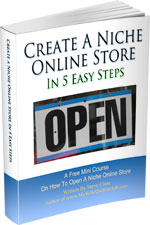
Ready To Get Serious About Starting An Online Business?
If you are really considering starting your own online business, then you have to check out my free mini course on How To Create A Niche Online Store In 5 Easy Steps.
In this 6 day mini course, I reveal the steps that my wife and I took to earn 100 thousand dollars in the span of just a year. Best of all, it's absolutely free!


